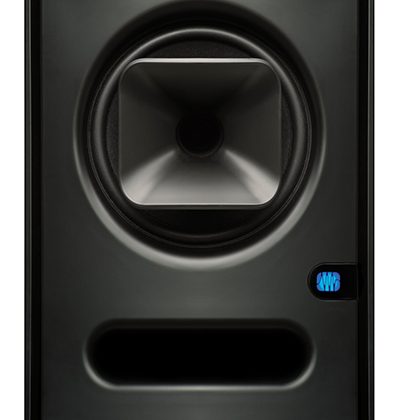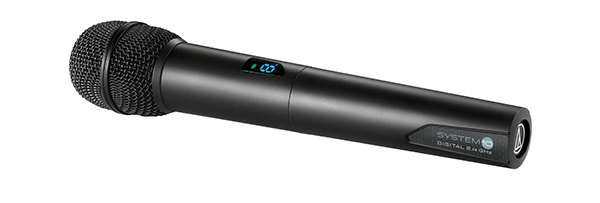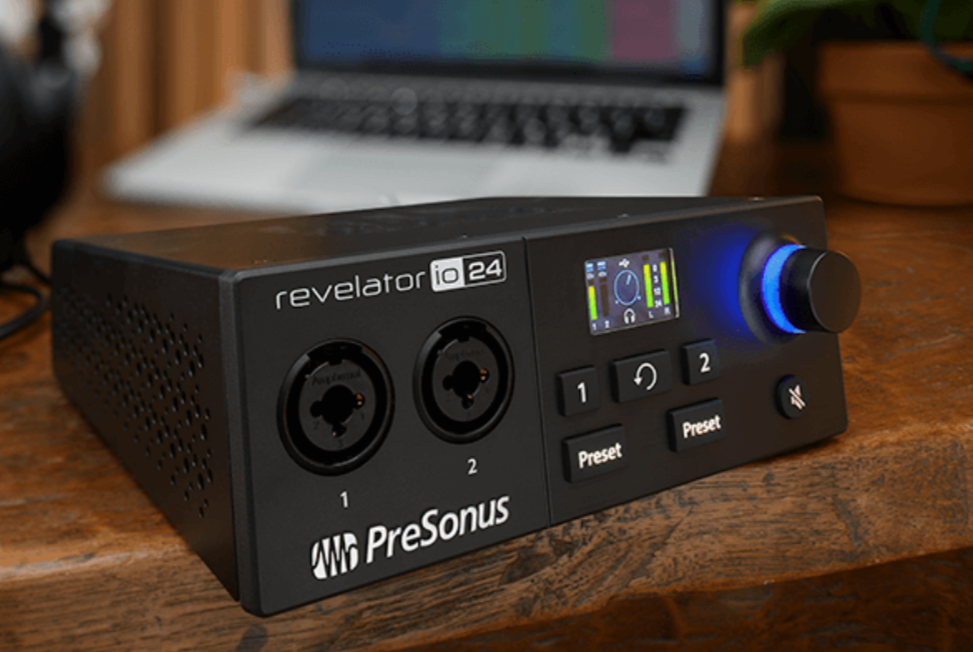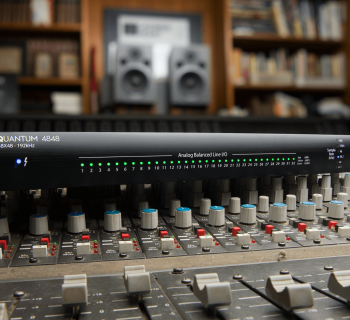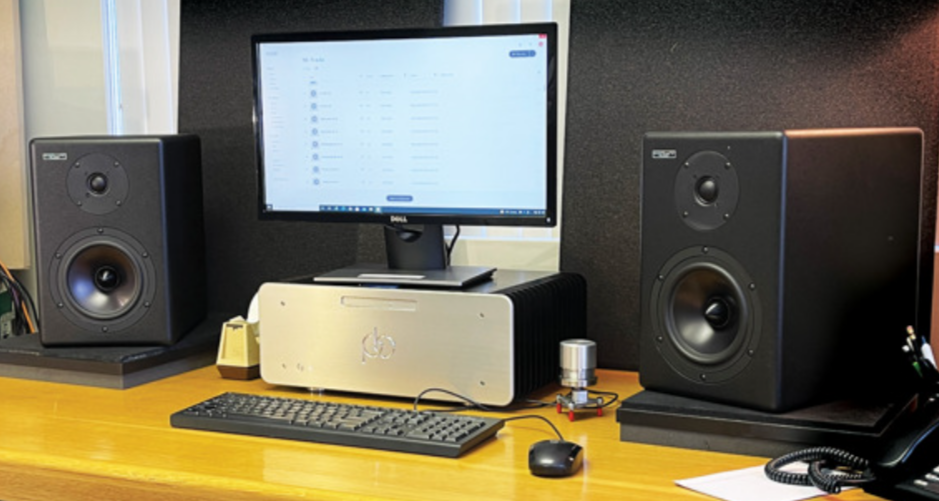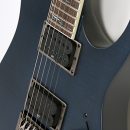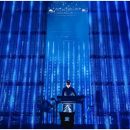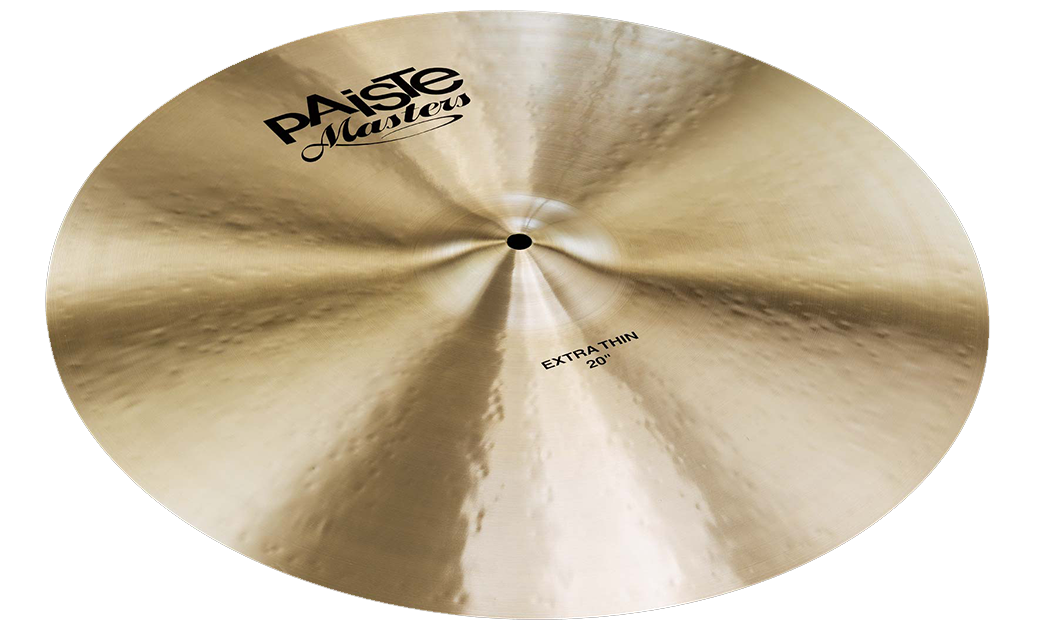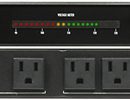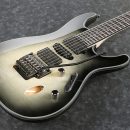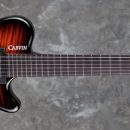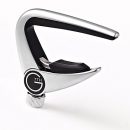 Technological advancements constantly give us more than we could have imagined as products experience evolutionary changes. The musical instrument (MI) industry is no exception when it comes to big changes, especially when it comes to sound reinforcement. Sure, we still love our vintage gear and aspire to create and record vintage sounds. But in the case of studio monitor speaker design, sound clarity and definition has come a long way. You really don’t want your father’s monitors.
Technological advancements constantly give us more than we could have imagined as products experience evolutionary changes. The musical instrument (MI) industry is no exception when it comes to big changes, especially when it comes to sound reinforcement. Sure, we still love our vintage gear and aspire to create and record vintage sounds. But in the case of studio monitor speaker design, sound clarity and definition has come a long way. You really don’t want your father’s monitors.
Case in point when it comes to evolutionary design is the PreSonus Sceptre S8 CoActual Active Studio Monitors, with their coaxial design and DSP processing technology. Sure, we can all agree that everyone hears things differently: some engineers are tuned in to the slightest nuance of sound and others may just hear a more of an overall effect. Nonetheless, those with exceptional and detailed hearing will be able to appreciate these monitors and the clarity they provide. But there is more to these monitor speakers than clarity. Read on to understand what really differentiates these beauties from the rest of the pack.
| Category | Value | Rating |
| Features | 20% | |
| Usability | 25% | |
| Sound | 25% | |
| Documentation & Support | 10% | |
| Price | 20% | |
| OVERALL RATING = 3.8, which earns it a WIHO! 3.6 stars or better: Outstanding, WIHO Award 3 stars or better: Worth considering 2 stars or better: Suited to specific needs 1 star or less: Not recommended |
||
Features
Studio monitors come in many different shapes, sizes and configurations yielding very different frequency responses before even hitting the space in which they sit. It’s extremely important to take all those features into consideration before selecting a pair of monitors for your studio. The PreSonus Sceptre S8 CoActual Active Studio Monitors offer both a unique design as well as optional settings to help configure the monitors to best fit your personal studio environment.
One of the first noticeable differences you’ll see in design is the coaxial cone. The low frequency driver is an eight-inch, glass-reinforced paper cone, and the high frequency driver is a one-inch diaphragm, compression driver. In partnership with Fulcrum Acoustic, the monitors provide what PreSonus calls Temporal Equalization by applying 32-bit floating point DSP to the output from the coaxial cone woofer and horn-loaded compression tweeter to optimize the timing of sound coming from each driver. Frequency response (at -10dB) is 38Hz to 23kHz, with the crossover frequency at 2.4kHz.
Two built-in, 90-watt, Class D amplifiers optimized for the woofer and the tweeter provide optimum headroom sure to fill your studio environment.
The rear of the monitor contains the usual On/Off switch, power connection via detachable IEC power cable, as well as input controls including Level control, XLR and TRS inputs. Additional frequency response adjustments are supplied via three Acoustical Tuning controls: High Frequency driver tuning options for signals over 2 kHz (linear, +1dB, -1,5 dB, -4 dB); High-pass filter switch options (linear, 60 Hz, 80 Hz, 100 Hz) with -24 dB/octave slope; and an Acoustic Space switch option (linear, -1.5 dB, -3 dB, -6 dB) to compensate for bass boost near a wall.
The Presonus Sceptre S8s also contain internal protection mechanisms controlling RF interference, output-current limiting, over temperature, On/Off transients, subsonic filter, and internal mains fuse.
The front-ported PreSonus Sceptre S8 CoActual monitors are constructed of vinyl-laminated MDF and weigh in at a hefty 24.25 lbs each. You’ll definitely need a decent sized mixing area to utilize these—and solid speaker stands or mix desk space. For smaller studios, PreSonus makes the Sceptre S6.
Usability
We found the PreSonus Sceptre S8 monitors exceptionally easy to use, and they also provided a number of optional control settings to match the frequency of the monitors to our studio environment in order to obtain optimal performance and sound. Having these customizable control options enables the monitor to fit a variety of different studio configurations and perhaps placement restrictions, which can have a direct impact on sound quality.
Installation of the monitors was very basic from a plug-and-play perspective, but considering the variety of frequency settings and placement of the monitors within your room (on your desk or stands), we needed to spend extra time focused on obtaining an optimal setup. One of the most important attributes of the PreSonus Sceptre series monitors is the coaxial design. You’ll want to make sure that you have proper height and angle adjustment to properly align the speaker/horn with your ears. Taking into account that we were placing these monitors on our desk, we used a set of isoAcoustic stands to achieve proper positioning and alignment. Having your nearfield monitor speakers in direct alignment with your ears is essential for mixing, but for sharing the mix with others, it’s important to note that the S8s provide a generous sweet spot for listening.
Each setting was easily modified via push-button selector switches, and illuminated LEDs made easy work of identifying our settings. Though we found physically accessing the controls on the back of the unit a bit of a chore when placed close to a wall, once the desired setting was obtained, we really didn’t need to mess with the switches again.
The PreSonus Sceptre S8 monitors power on using a basic rocker switch located on the back of the unit. We see this arrangement on most monitor configurations, but often wish for easier access on the front of the unit. The illuminated PreSonus emblem on the front of the monitor provided excellent visual indication of power on/off status.
The illuminated PreSonus emblem on the front of the monitors also provides an indication for clipping created by overdriving the input level. Blue illumination represents normal operation and a clean signal while Red illumination represents a distorted overdriven signal. That’s a nice detail! We found the color and brightness of illumination excellent, even when we didn’t dim the lights in our studio for ambience.
Sound
Choosing monitors to suit your specific studio can be a daunting task especially since you won’t know what they actually sound like until you have them installed in your room and dialed in. Among many variables, the most prominent challenge lies within deciding the frequency response and how specific placement in your studio affects the overall sound of the monitors: will they produce to much bass and boom or will they not sound big enough and appear thin or too bright? The size, shape, construction material and monitor placement can make a tremendous difference in what you hear coming from your monitors. Fortunately with the PreSonus Sceptre monitors, you can customize and tailor the sound frequencies for optimal performance in your specific setting.
We were able to evaluate the PreSonus S8s in our studio for an extended length of time, which gave us time to dial them in and really settle into the full spectrum of sound provided by the monitors. Right from the start, we were taken by the full-range of sound all the way from the low to high end. The deep cabinets with the front sound port really provided great bass response and clarity—more so than you’d expect from any ported nearfield monitor, and the coaxial mounted horns really made the highs pop and cut through sparkling clear.
The differentiating aspect of the PreSonus Sceptre series monitors really comes down to the coaxial speaker configuration. Not only is the design and technology different, but the whole listening experience is enhanced in comparison to conventional speaker configurations. We found the overall sound seemed to provide a more balanced presentation of source material while providing excellent separation and clarity, and the wide sweet spot made for easily listening when not seated in the mix position. We were able to detect every nuance of each instrument’s performance whether listing to Jazz, Rock, Country or R&B. The sound produced very warm and smooth frequencies that enabled us to listen closely for long periods of time without any hearing fatigue, and at lower volume levels, we didn’t experience any loss of low-end presence or clarity.
Documentation and Product Support
The documentation provided for the PreSonus Sceptre S8 monitors provided all the information needed for proper set-up, connection, operation and configuration. The Owners manual also provided excellent visual aids as well as sample settings to match your setup within your specific studio environment.
Price
The PreSonus Sceptre S8 monitors (MSRP $999.95 each) sell for approximately $750 apiece street. Considering the technology, quality of sound, features and details, we think the PreSonus Sceptre S8 monitor speakers are a very good deal for the professional project studio.
Contact Information
PreSonus
www.presonus.com
| Evaluation Short-List |
|

